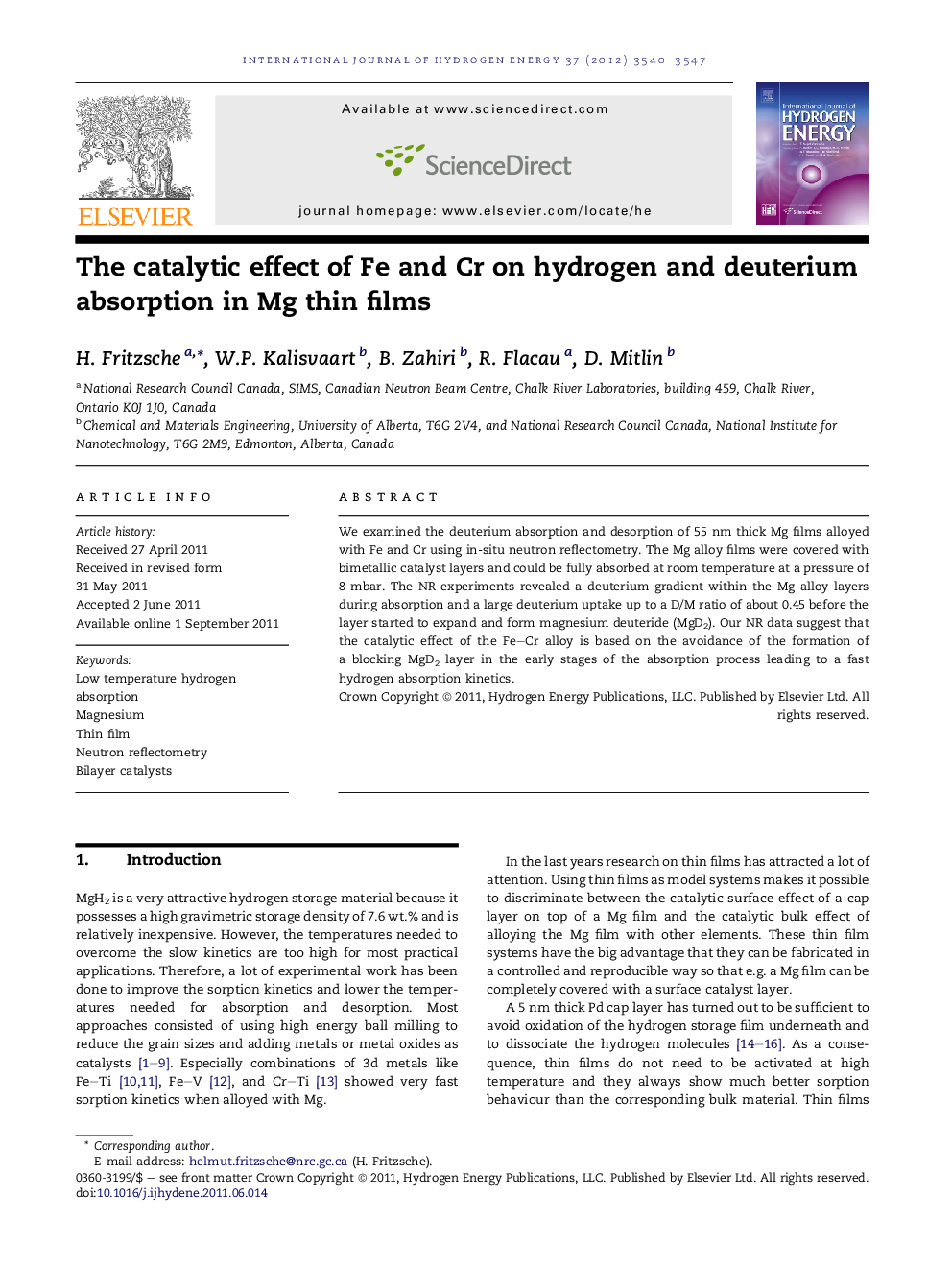| Article ID | Journal | Published Year | Pages | File Type |
|---|---|---|---|---|
| 1282361 | International Journal of Hydrogen Energy | 2012 | 8 Pages |
We examined the deuterium absorption and desorption of 55 nm thick Mg films alloyed with Fe and Cr using in-situ neutron reflectometry. The Mg alloy films were covered with bimetallic catalyst layers and could be fully absorbed at room temperature at a pressure of 8 mbar. The NR experiments revealed a deuterium gradient within the Mg alloy layers during absorption and a large deuterium uptake up to a D/M ratio of about 0.45 before the layer started to expand and form magnesium deuteride (MgD2). Our NR data suggest that the catalytic effect of the Fe–Cr alloy is based on the avoidance of the formation of a blocking MgD2 layer in the early stages of the absorption process leading to a fast hydrogen absorption kinetics.
► Mg–Fe–Cr thin film alloys show fast hydrogen absorption/desorption. ► Catalytic effect of Fe and Cr is due to prevention of the formation of a diffusion blocking MgD2 layer. ► Full absorption at room temperature in 8 mbar deuterium. ► The films are not expanding up to D/M = 0.45. ► Neutron reflectometry shows deuterium concentration profile in the layers.
